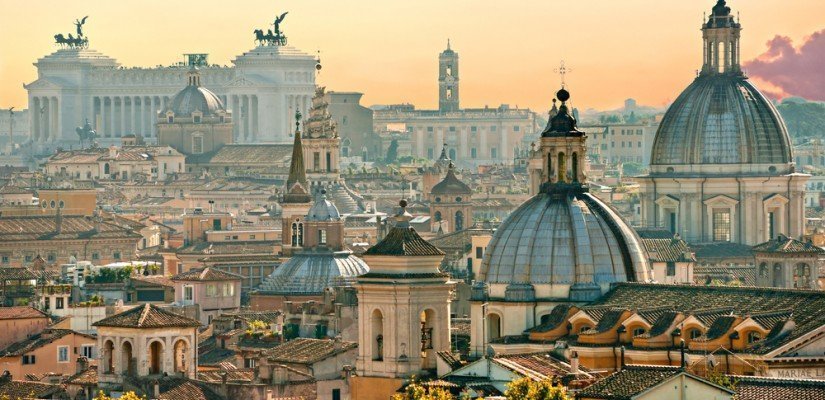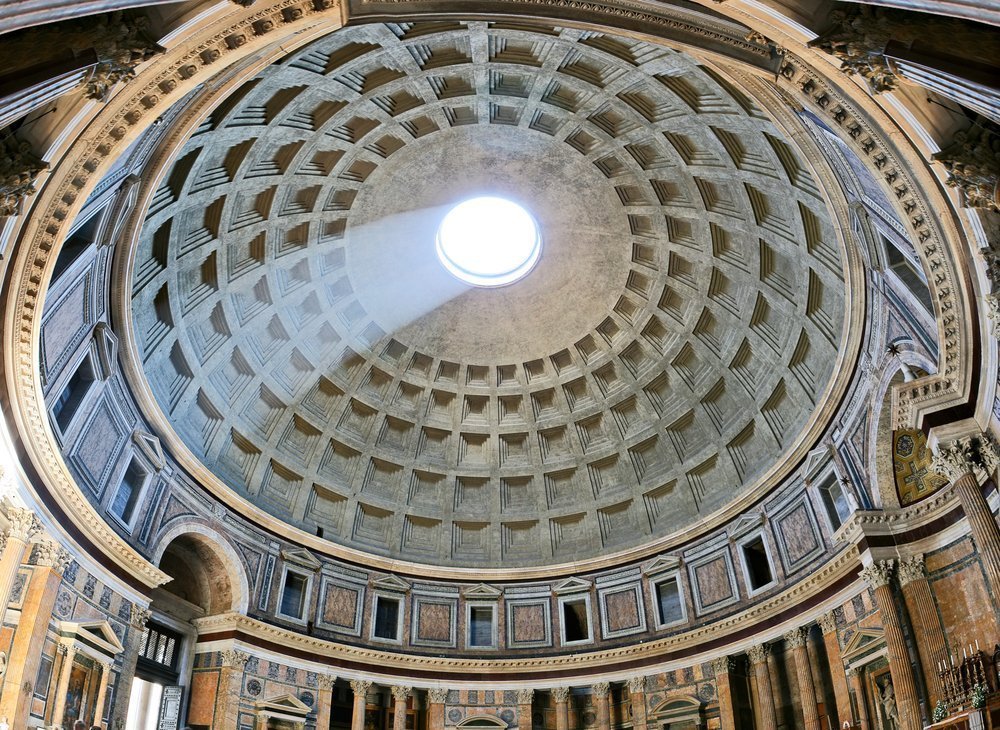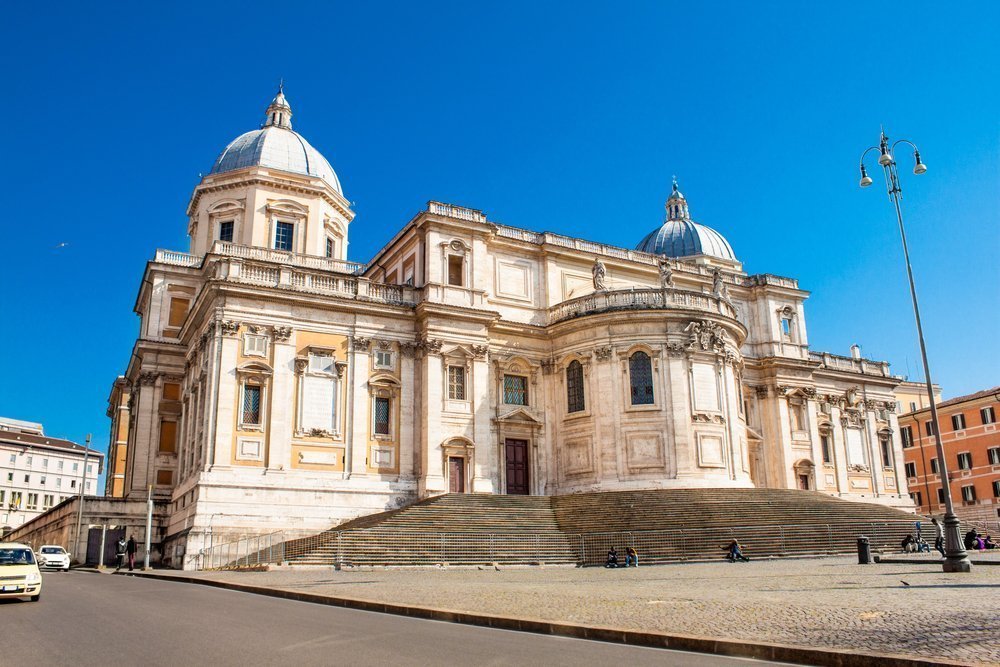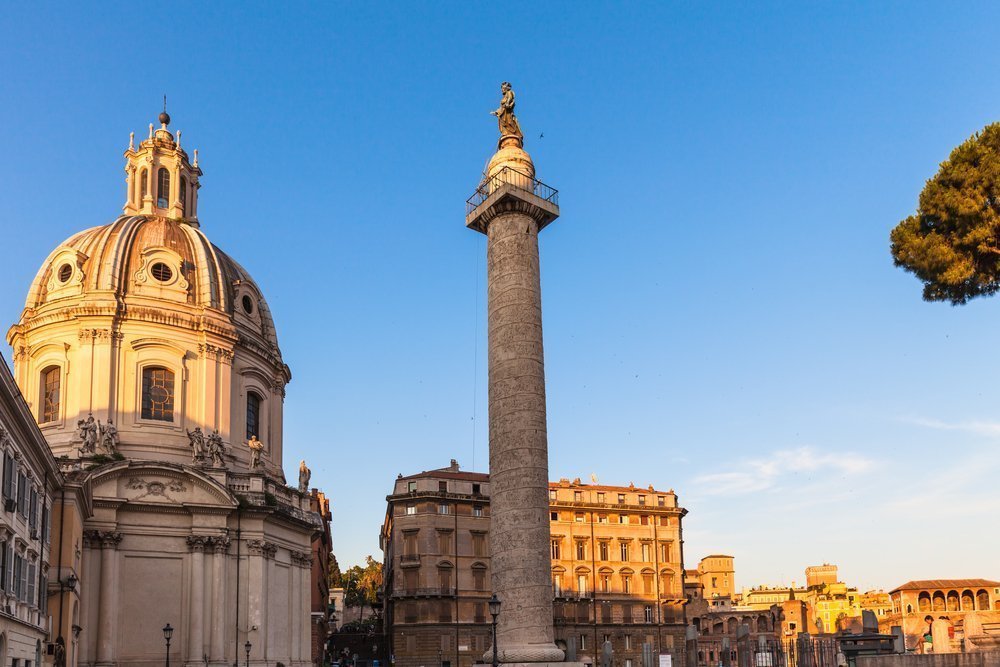All roads lead to Rome, and many of Rome’s roads lead to domes. These domes that are often attached to churches and other large buildings that show their importance, like large crowns on top of the city’s skyline. Although it isn’t a competition, Vatican City and Rome hold the tallest and largest unsupported domes in the world. Rome is a city of full of domes, each with their own stories to tell.
Read on to learn more about some of the city’s most iconic domes (and why they are worth checking out)!
St. Peter’s Dome
Starting off with one of the most famous and photographed domes in Rome and Vatican City, there is the dome of St. Peter’s Basilica. It takes the prize for the tallest dome in the world, measuring an amazing 130 meters tall. With Michelangelo’s successful design, it would not only be inspired by previously built domes, but St. Peter’s dome would go on to influence many churches (and their domes) in Rome.
Michelangelo, although he was in his early seventies, accepted his final project to design St. Peter’s dome in 1547. Inspired and amazed by the dome of the Pantheon (more on that later), Michelangelo designed a dome that would be “bigger, but not more beautiful, than that of the Pantheon.”
Visit the Vatican today and you can climb St. Peter’s dome to see the stunning view over the city. While walking those seemingly never ending flights of stairs, you are able to see and appreciate Michelangelo’s design by walking around the dome’s base on the inside and on the outside. Those that climb the dome are able to see the colorful mosaics and decorations up close, that can seem so far away from the basilica floor.
Here are our most popular Vatican tours (all with skip-the-line access):
→ Click here to learn more about St. Peter’s Basilica
Pantheon Dome
From one famous dome to another, next is the dome of the Pantheon. The Pantheon seen today, built by the emperor Hadrian in 126 AD (after the first Pantheon burned down), is still the largest unsupported dome in the world. Even though it is the oldest building on this list, the dome of the Pantheon has become famous because of its huge dome and ability to stand the test of time.
Visitors entering the Pantheon almost immediately look up at the massive dome above them. The dome’s key feature is the oculus at its center, which filters in sunlight from the outside like a spotlight. But what happens when it rains in Rome? Because the oculus is open to the elements, rain cascades into the Pantheon whenever it rains, and then follows a drainage system on the Pantheon’s floor.
The dome of the Pantheon is an engineering and architectural marvel, and it creates a large open space that has been amazing its visitors since the days of ancient Rome.
Here are our most popular tours to the Pantheon:
→ Click here to learn more about the Pantheon
Basilica of Santa Maria Maggiore
As one of the five papal basilicas in Rome, the Basilica of Santa Maria Maggiore is a popular site to visit for many. The basilica is decorated with not one large dome, but two smaller ones. Under each dome is its own private chapel designed in 1673 by the architect Carlo Rainaldi.
Although these domes seem identical, Rainaldi actually designed the cupolas to be slightly different from one another. This is because the design of the domes were meant to be viewed from a certain viewpoint. Today this point is by the Via Cavour, where both domes can be seen clearly, which is not the case as you get closer to the basilica.
Each bronze dome, divided into 8 parts and decorated with beautiful frescoes is not to be missed, especially on August 5 each year. This is when white rose petals are dropped from the domes to the basilica floor, to remember when snow fell around the basilica in the 4th century AD.
Here are our most popular tours to Rome’s basilicas:
→ Click here to learn more about the Papal Basilicas of Rome
Church of Santa Maria di Loreto
Located near Piazza Venezia and the Roman Forum, the Church of Santa Maria di Loreto is surrounded by the icons of ancient Rome. But just as Rome was not built in a day, this church took many years to complete. Surprisingly, the dome for Santa Maria di Loreto was finished in 1577, about 70 years after the construction of the church began.
Designed by Jacopo del Duca, the dome itself is equally elegant on the outside as it is on the inside. On the outside, you can tell that Jacopo del Duca was a pupil of Michelangelo, because the dome looks similar to St. Peter’s dome. But what makes Santa Maria di Loreto’s dome different is a very detailed but beautiful lantern that sits at the top of the dome.
On the inside of the dome are colorful frescoes of important biblical figures, from prophets to saints. Although visitors cannot climb to the top of Santa Maria di Loreto’s dome, they can still enjoy this dome’s beauty from inside and outside of the church.
Here are our most popular tours about ancient Rome:
→ Click here to learn more about the Roman Forum





